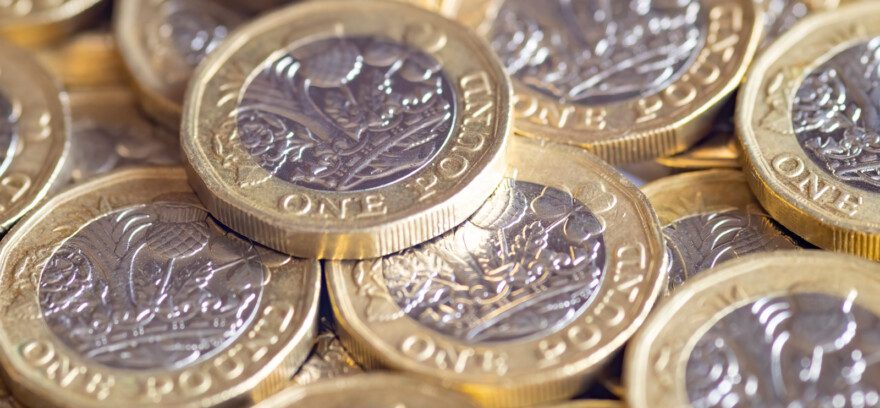UK markets rallied this week with the FTSE 100 Index rising 1.2% to trade at 7,640 points at the time of writing. The Bank of England kept rates steady at 5.25% on Thursday as Governor, Andrew Bailey warned there was ‘still some way to go’ before inflation hit its target.
The Bank of England’s Monetary Policy Committee said interest rates would need to be kept high for an extended period of time and left open the option of further rate rises if necessary. The UK central bank expects UK GDP to be flat in the fourth quarter, compared to 0.1% growth predicted in November, with household spending weaker than previously expected.
The UK economy unexpectedly contracted in October with all three main sectors reporting declines in output, according to figures that point to a weakening economy. GDP fell by 0.3% between September and October, driven by declining services activity as well as contracting manufacturing and construction output, according to data published by the Office for National Statistics on Wednesday.
Economists polled by Reuters expected no change in GDP after a 0.2% expansion the previous month. UK wage growth eased in the three months to October as a decline in vacancies became the longest on record, adding to evidence that the labour market is softening. Average pay grew by 7.3% excluding bonuses, or 7.2% including them, the Office for National Statistics said on Tuesday. This is down from recent peaks, but marks a rise in real terms as inflation has slowed.
Public sector pay grew by 6.9% excluding bonuses, the fastest pace on record, almost matching growth in the private sector. The number of vacancies was 949,000 in the three months to November, declining for the 17th consecutive month to 45,000 lower than the previous quarter and 229,000 lower than a year earlier.
Commodity markets
In the commodity markets, Brent crude futures traded around $77 per barrel on Friday, recovering from a fall earlier in the week, on a bigger-than-expected weekly withdrawal from US crude storage and a weaker dollar after the US central bank signalled lower borrowing costs for 2024.
The International Energy Agency said on Thursday that global oil demand would grow by 1.1 million barrels per day in 2024, up slightly from its previous forecast of 930,000 barrels per day. The US Dollar also dropped to a four-month low on Thursday after the Federal Reserve indicated that rate hikes were over. A weaker Dollar makes oil cheaper, which can increase demand.
However, oil prices remain around $20 below September highs as record US production has collided with a weakening economy in China, leading to worries that the market is oversupplied. OPEC blamed ‘exaggerated concerns about oil demand growth’ for the dramatic decline in oil prices in the group’s December market report.
Gold prices traded around $2,040 an ounce on Friday and are set for a weekly rise, as falling treasury yields increase the appeal of holding non-yielding bullion.
Equity markets
US equity futures were in positive territory on Friday after the Federal Reserve triggered a market rally as it signalled interest rate cuts in 2024. In Thursday’s regular session, the Dow Jones Industrial Average gained 0.43%, the S&P 500 rose 0.26%, while the Nasdaq Composite declined 0.19%.
Federal Reserve Chair, Jerome Powell sent his clearest signal that the US central bank would be cutting rates in 2024 and investors welcomed the prospect of lower borrowing costs. The Federal Open Market Committee held rates at a 22-year high of 5.25% to 5.5% at their latest meeting on Wednesday. However, the decision came alongside new forecasts from central bank officials pointing to 0.75% worth of cuts next year, a more dovish outlook for rates than in previous projections.
Powell’s comments after the Federal Reserve’s decision also pointed to a switch in tone from the central bank, as he stated that the benchmark rate is ‘likely at or near its peak of this tightening cycle’. Officials expect rates to fall even lower in 2025, with most officials forecasting they would end up between 3.5% and 3.75%.
Figures released on Tuesday showed that consumer price inflation in the US eased to 3.1%, in line with expectations, marginally below October’s 3.2% rate. However, core prices rose 0.3% in November, while the year-on-year core rate remained flat at 4%. Janet Yellen, US Treasury secretary, said that the figure’s confirmed inflation was coming down ‘meaningfully’, while President Joe Biden emphasised that, despite the fall in the consumer price index, unemployment remained below 4%.
The information provided in this communication is not advice or a personal recommendation, and you should not make any investment decisions on the basis of it. If you are unsure of whether an investment is right for you, please seek advice. If you choose to invest, your capital may be at risk and the value of an investment may fall as well as rise in value, so you could get back less than you originally invested.
